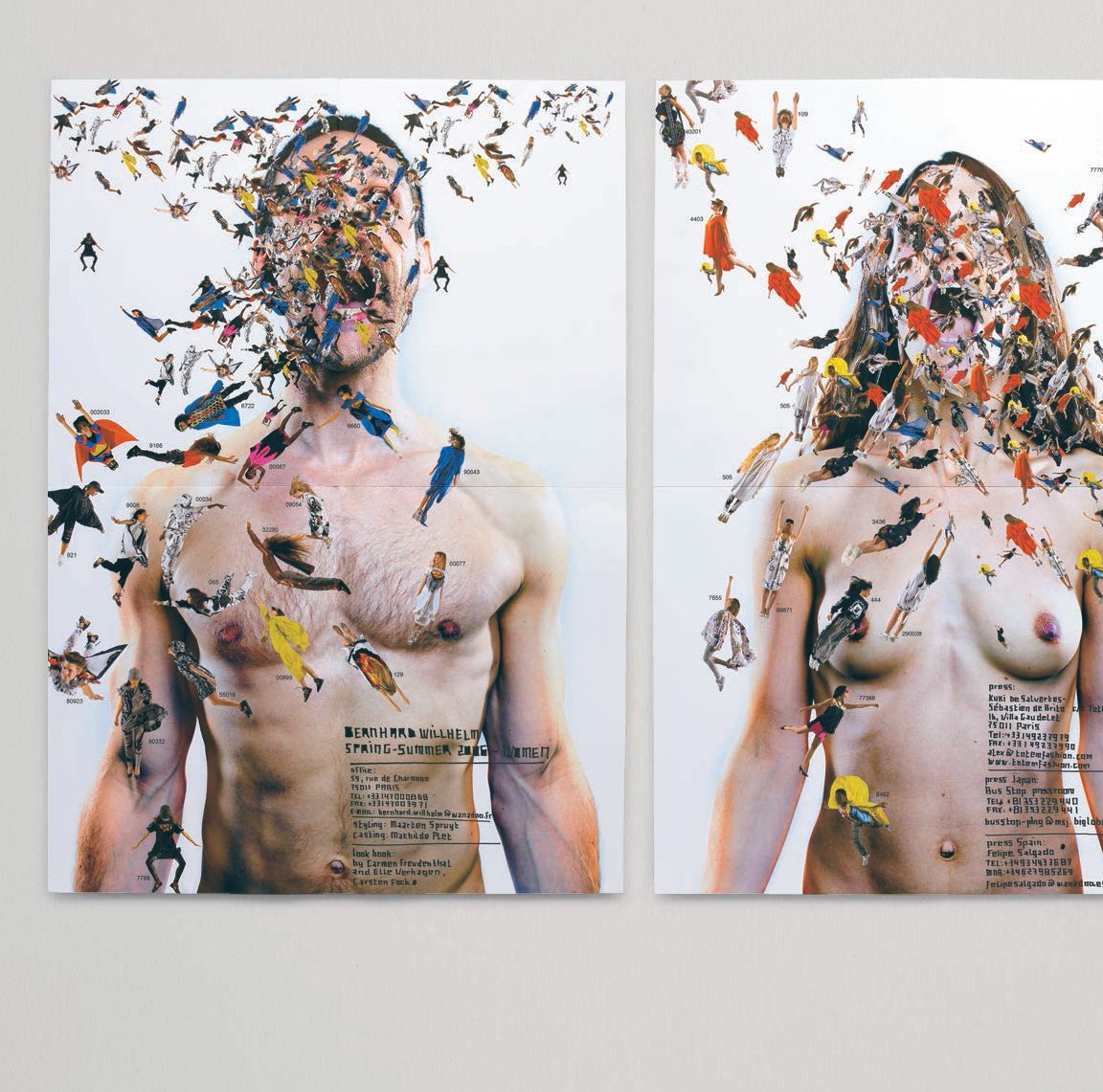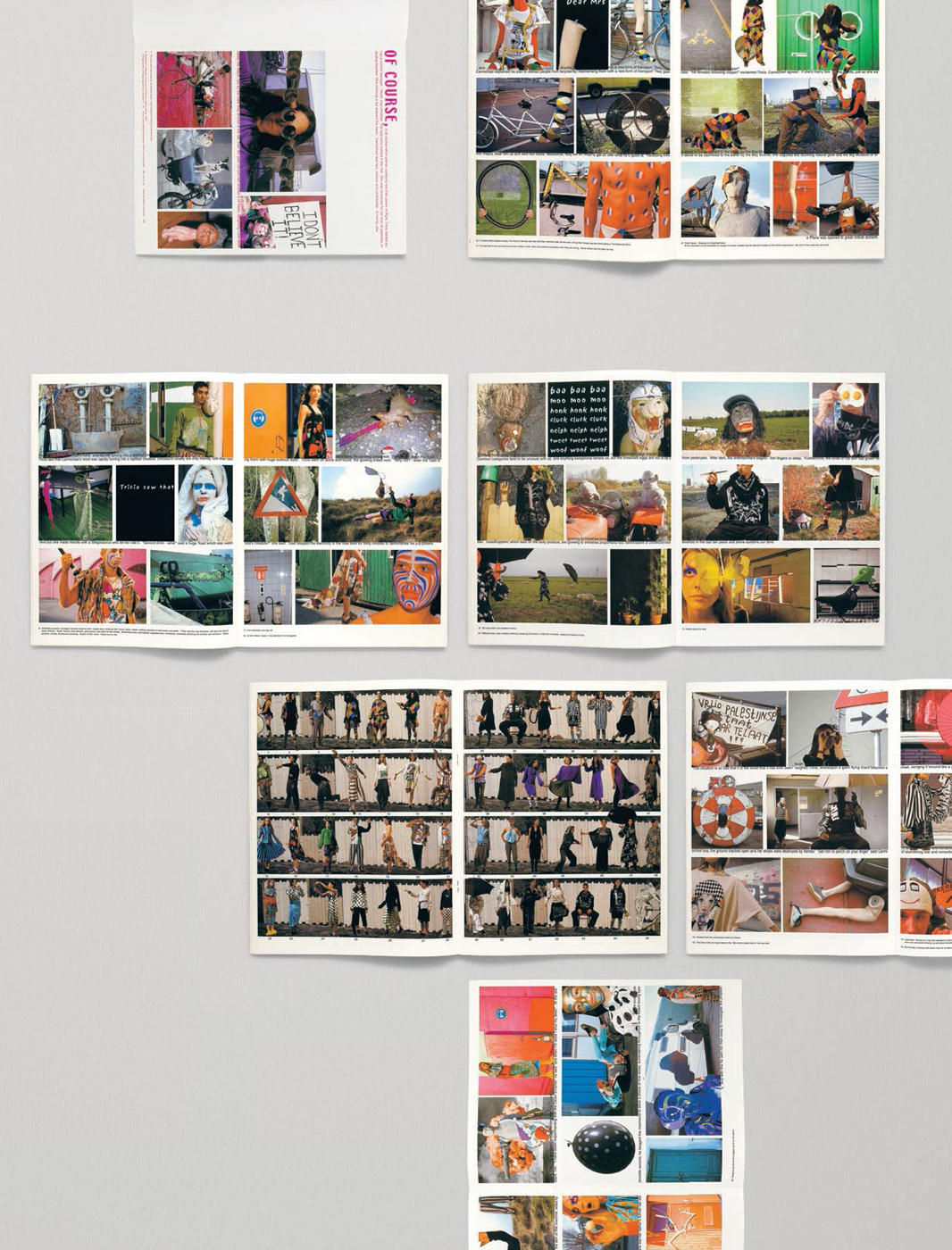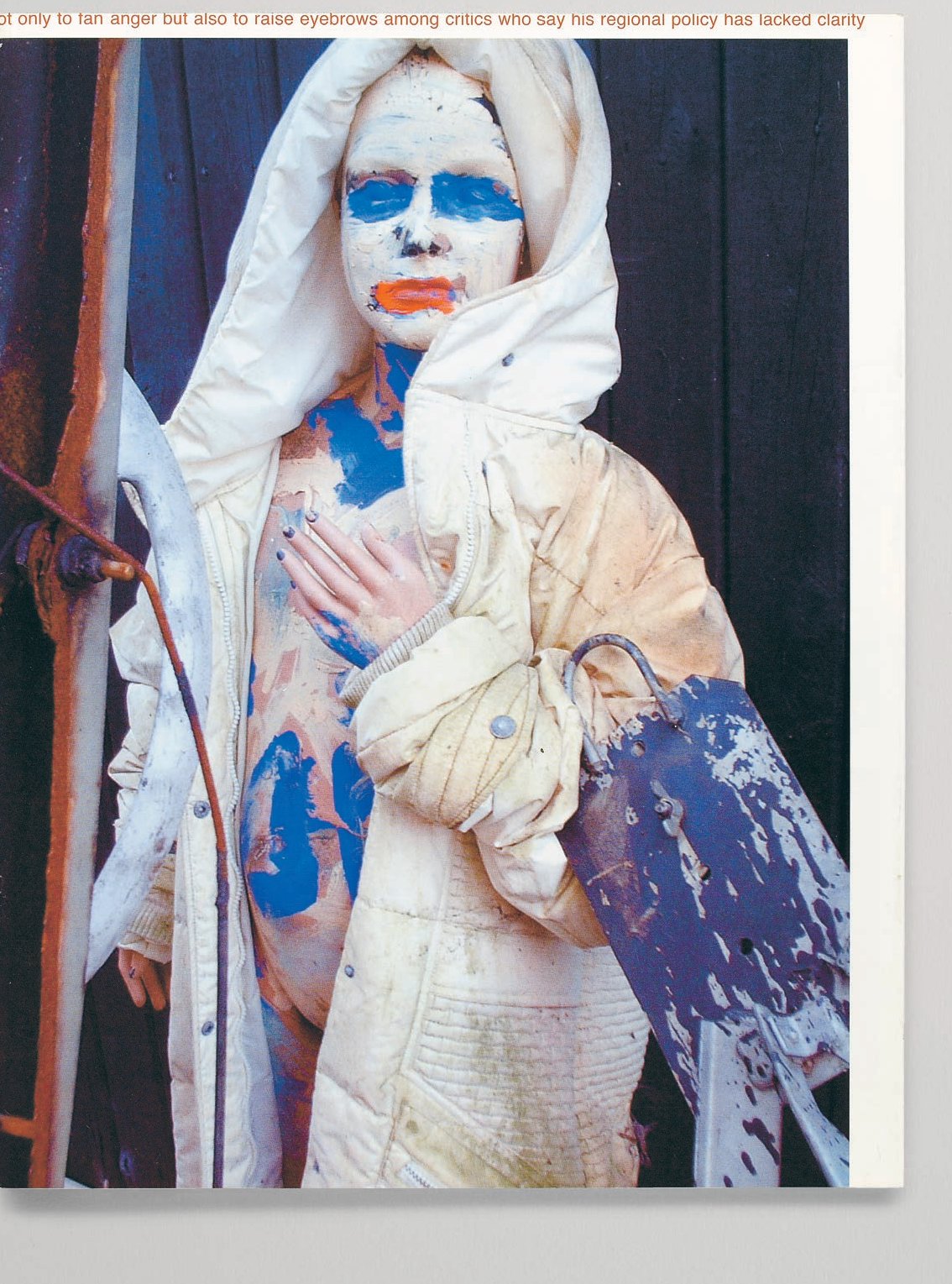FREUDENTHAL VERHAGEN for BERNHARD WILLHELM
Carmen Freudenthal and Elle Verhagen joined forces immediately after college in 1988, and since then they have earned an international reputation for their unique visual fantasies. Based in Amsterdam, the duo build rich, surrealist visions layered on detailed conceptual narratives. Inspired by both the classic and the contemporary, their work has a polish that blurs the line between reality and fiction and creates tension. They are creative innovators whose products are consistently infused with a sharp wit that, again, puts viewers offbalance. “First of all it should of course make sense, but just as important, it should be something new and if possible, please let it be funny (in an unexpected way),” says Freudenthal.
Although fashion was always an important part of their work, Freudenthal and Verhagen were increasingly inspired by the Dutch scene in the late 1990s and made a conscious decision to concentrate on fashion editorials. Primarily a photography and styling team, without any experience in graphic design, they were more than surprised when Bernhard Willhelm commissioned them to produce a complete lookbook. While they grew more confident about the potential of graphic design with each season, it was used exclusively to enhance the imagery. “The first lookbooks we made for Bernhard Willhelm were just a collection of photographs with a staple to hold them together. After a couple of lookbooks we started thinking about layout and typography to enrich the visuals,” Freudenthal says.
A successful and mutually satisfying relationship with Willhelm evolved that covered lookbooks from 2001 to 2007. Willhelm is well known to offer his collaborators creative freedom, completely trusting in their ability and experience. Freudenthal believes this is common within the fashion industry. “We get more freedom to make a personal translation of the product with our fashion clients. They want added value from us. The collaboration is therefore more in the field of inspiration and less in controlling the final message.” The duo look for clients who facilitate their ideas, rather than ones who collaborate actively with them.
Willhelm encouraged Freudenthal and Verhagen to ‘interpret’ his collections, and produce print-based extensions of his garments. Bringing together historical, ethnic and pop culture influences each season is an independent exercise that requires an original lookbook solution. As such, each collection has inspired an increasingly elaborate and varied visual response, from computer games to ghosts, from collage to advanced image manipulation. Freudenthal and Verhagen are extremely self-motivated and thrive on having collective responsibility for a project, from concept to photography to graphic design. “The unique thing in all the Bernhard Willhelm lookbooks when you compare them to other products is we had the total freedom to do as we liked and were in control of the overall look,” says Verhagen.
With this freedom, it is important to start with background information before the creative process begins. “It’s a back and forth process: think about the boundaries to have a focus, then try to forget about the boundaries to give unexpected ideas a chance,” says Freudenthal. This can be difficult with fashion, as garments often do not arrive until the day of the shoot. Willhelm talks Freudenthal and Verhagen through the collection as a conceptual abstraction and from this they build a flexible structure on which to focus their energy. Sheer lack of time means adaptability is vital.
Although the relationship with Willhelm has been fruitful and supportive, Freudenthal does not see a shared creative background as a prerequisite. “I don’t like to generalize. A client from a non-creative background can be just as understanding.” This perhaps reflects the fact that she and Verhagen operate comfortably without a great deal of client involvement; mutual respect is the key element. However, as a duo and often as leaders of larger teams, collaboration is fundamental to their process. “Everything is 200 per cent teamwork. Between the two of us, but also with other collaborators on a specific project,” says Freudenthal. In the increasingly homogenized world of fashion, Freudenthal Verhagen continue to forge their own path, maintaining their independent spirit and visual style.

For Spring/Summer 2006 the lookbook was produced as two A1 posters. “This was the superwoman collection. Before the shoot we had the idea to show Bernhard and Jutta as giants being attacked by their own creations, mean little fashion elves,” says Verhagen. “The day before the show the collection arrived and (as usual) everything had to be shot in one day in Bernhard’s studio in Paris,” says Freudenthal.

“The Autumn/Winter 2002/03 lookbook represented a conscious effort to include more graphic design in our work. We shot the supporting images in and around Amsterdam and ‘collaged’ them together with the main looks to make it feel like it was all done in Paris. We also asked Chris Pugmire and Sharon Cleary to add text to the comic book. The goal was to bring a liberal, Provo feel to the lookbook.”


“The central themes for the Spring/Summer 2003 were do-it-yourself, construction and flowers. We shot on location at a building site in the middle of the flower bulb region of the Netherlands. The Dutch ‘Floriade’ is an international exhibition of flowers and gardens that is only held once every ten years. The event was taking place nearby so we were able to incorporate shots from there, in particular the cover image.”

“We made the Spring/Summer 2007 lookbook right after the show in our studio in Amsterdam. Bernhard used very young models in his show and wanted to do something about computers for the lookbook. That was our starting point,” says Freudenthal.
